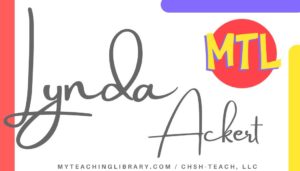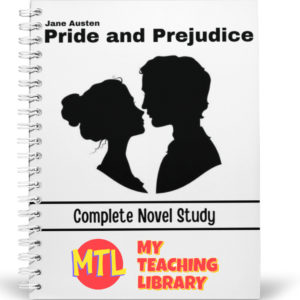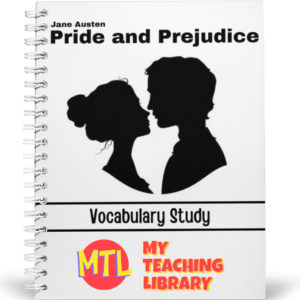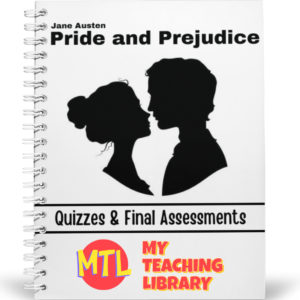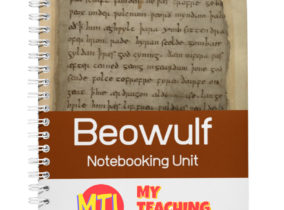“I am amusing myself with Miss Austen’s [sic] novels. She has great power and discrimination in delineating common-place people; and her writings are a capital picture of real life, with all the little wheels and machinery laid bare like a patent clock.”
—Henry Wadsworth Longfellow, Journal entry, May 23, 1839
So why have students read this 19th century novel?
I could give you several reasons that seem to be ‘literary learning’ in nature such as…
- To study the author’s use of satire and irony as well as many other literary devices
- The novel has a strong female protagonist and thus a study of her role would lead to rich discussion
- The ability to make strong contrasts between characters and how Austen builds our knowledge of each
- To find and study the many themes of the novel and how these themes relate to students’ lives today
…and while all of these would be true, that’s not what I’m going to do. Instead I’m simply going to highlight several ‘life lessons’ that can be learned while reading and examining the story and characters.
Lessons which can be learned while reading Pride and Prejudice
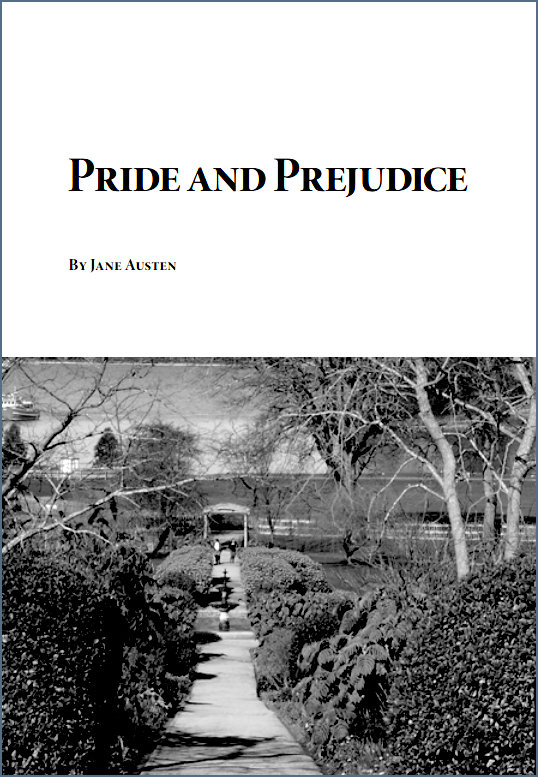
1. It’s okay not to be good at everything.
Elizabeth Bennet, the novel’s heroine, is interesting not because she’s good at everything, but precisely because she isn’t. She and her eventual husband, Mr. Darcy, have a conversation early in the novel about what defines an “accomplished” woman. Darcy indicates that such a lady would be able to play music, sing, dance, draw, speak several languages, and read frequently. Rather than pretend she possesses these qualities—or feel ashamed that she doesn’t—Elizabeth accepts who she is.
Elizabeth replaces exhausting exceptionalism with passion. There are certain things that she is passionate about—reading, her family, travel—that make her unique and, in fact, endear her to Mr. Darcy.
As you teach this novel, point out this fact to students to remember that it’s okay not to be good at everything and life is a learning process. Have them take time to reflect on (and try to discover) the passions and qualities that make each of them unique.
2. Don’t make snap judgments.
This is the obvious lesson of the novel—don’t judge the proverbial book by its cover. This lesson is as important as ever in today’s society. Remind students not to let their first impressions dictate how they feel about people, ideas or even activities. Don’t shy away from something because you fear it—try to view it from a different perspective. Ask them to allow others to surprise them! To keep an open mind as they might find that people may contradict the image they first presented to them.
3. The importance of planning.
In this easily-readable novel, Ms. Austen underscores the importance of planning. Pride and Prejudice as perfectly-structured a novel as ever was written: from the initial tension in Elizabeth and Darcy’s meeting to the disastrous anticlimax of the first proposal, the upward trajectory of Elizabeth’s feelings for the man she’d judged poorly, Darcy’s climactic saving of the Bennet family’s reputation, and his subsequent successful proposal of marriage to Elizabeth, the novel moves quickly and deliberately in precisely-plotted chapters. Austen wastes no time with frivolous details: everything ties together; each scene has a purpose.
Ask students to take a page from Austen’s book as they plan both in school and in life. Careful preparation can lead to great success!
4. A little humor goes a long way.
Despite the beliefs of some, Pride and Prejudice is not just Victorian chick book. It’s a romantic tale with a marriage plot, to be sure, but it’s also a comedy. From the sycophantic Mr. Collins to the drily sarcastic Mr. Bennet, the novel is filled with jokes, little nods from Austen to the reader. The book is really funny.
When faced with a potentially gloomy future, Mrs. Bennet breaks down. Elizabeth, however, learns to laugh. It is her humor, in large part, which melts the icy exterior of the shy Mr. Darcy and leads to their mutual happiness. Ask students to keep her success in mind–and bring this sense of humor into their daily lives. When facing issues, take a minute to step back. Ask your students if they can learn to laugh at a problem, as it might help them remedy it more effectively.
5. If at first you don’t succeed…try again.
There’s no shame in failure. Mr. Darcy failed miserably in his first attempt at proposing to the object of his affection, but he tried again. And look at him now: a timeless hunky archetype with 200 years of admirers to his name. Austen, too, met with failure. She first drafted the novel in 1796—seventeen years before it was finally published. Her refusal to be disheartened led to the publication of a novel that proved truly timeless.
Students will have failures in both the classroom and in life. Remind your students not to let these failures discourage them. Look to their Victorian counterparts—if at first you don’t succeed, try again!
Ready to Teach Pride and Prejudice?
My Teaching Library has several resources for you!
Pride and Prejudice Novel Study
Complete novel study for Jane Austen’s Pride and Prejudice (196 pages). Includes:
– Author’s Biography
– Novel Introduction
– Characters and Themes
– Quotes and Analysis
– Teaching Guides dividing the novel into 5 sections w/
* Chapter Summaries, Thought Questions and Vocabulary
* Student Handouts
* Student Worksheets, Assessments & Keys
– Final Assessments
Pride and Prejudice Vocabulary Study
Complete novel study for Jane Austen’s Pride and Prejudice (196 pages). Includes:
– Author’s Biography
– Novel Introduction
– Characters and Themes
– Quotes and Analysis
– Teaching Guides dividing the novel into 5 sections w/
* Chapter Summaries, Thought Questions and Vocabulary
* Student Handouts
* Student Worksheets, Assessments & Keys
– Final Assessments
Pride and Prejudice | Assessments
Looking for only a way to test student reading comprehension and understanding as they read Jane Austen’s Pride and Prejudice? The resource will give you 5 quizzes for students to take while reading the novel and then after they have completed the entire novel, an essay assessment as well as a 20 question, multiple choice test. Answer Keys included!
Need a copy of the book itself?
Pride and Prejudice (Jane Austen)
If you’d like a FREE PREVIEW of what you’ll get if you download the Pride and Prejudice Novel Study, simply click here to instantly download a preview.
________________________
>> Learn more about My Teaching Library! <<
Thank you for visiting My Teaching Library,
Lynda
